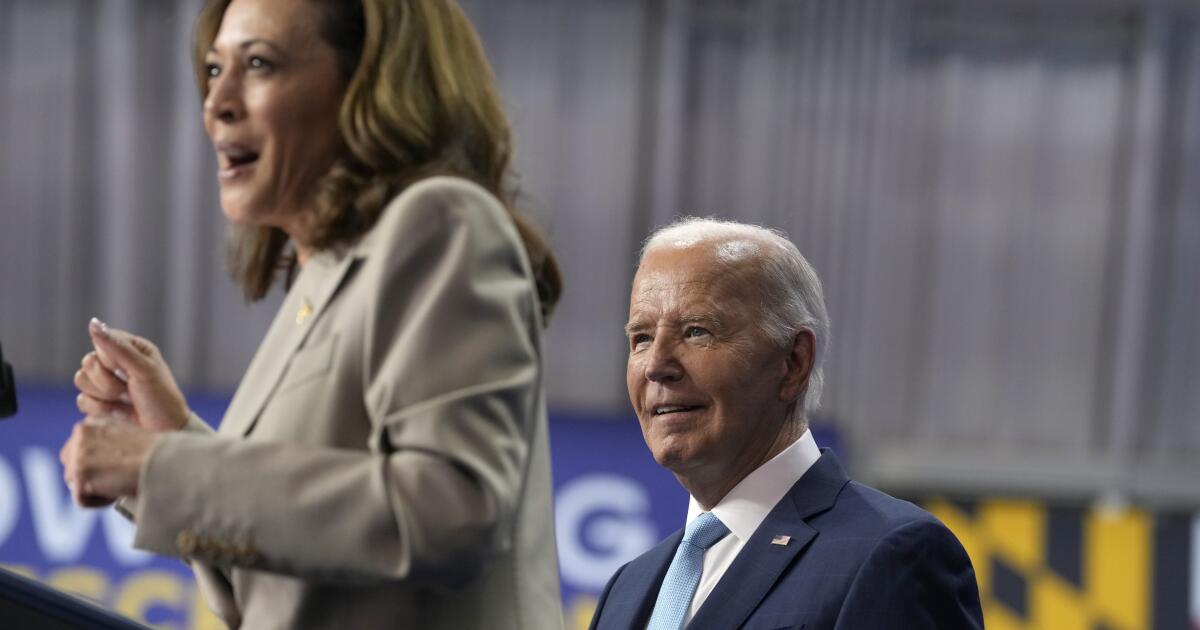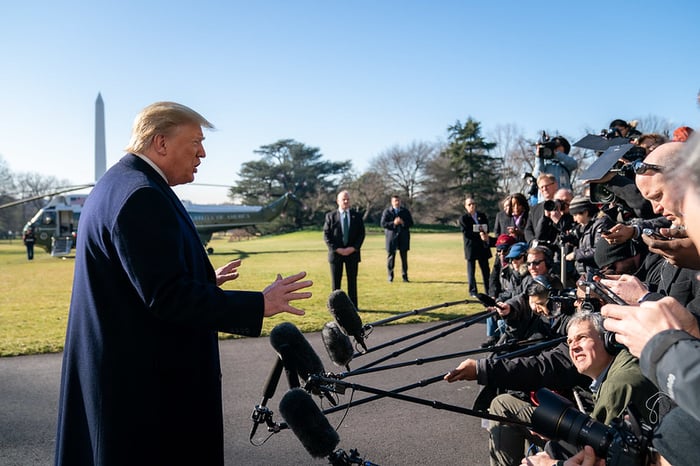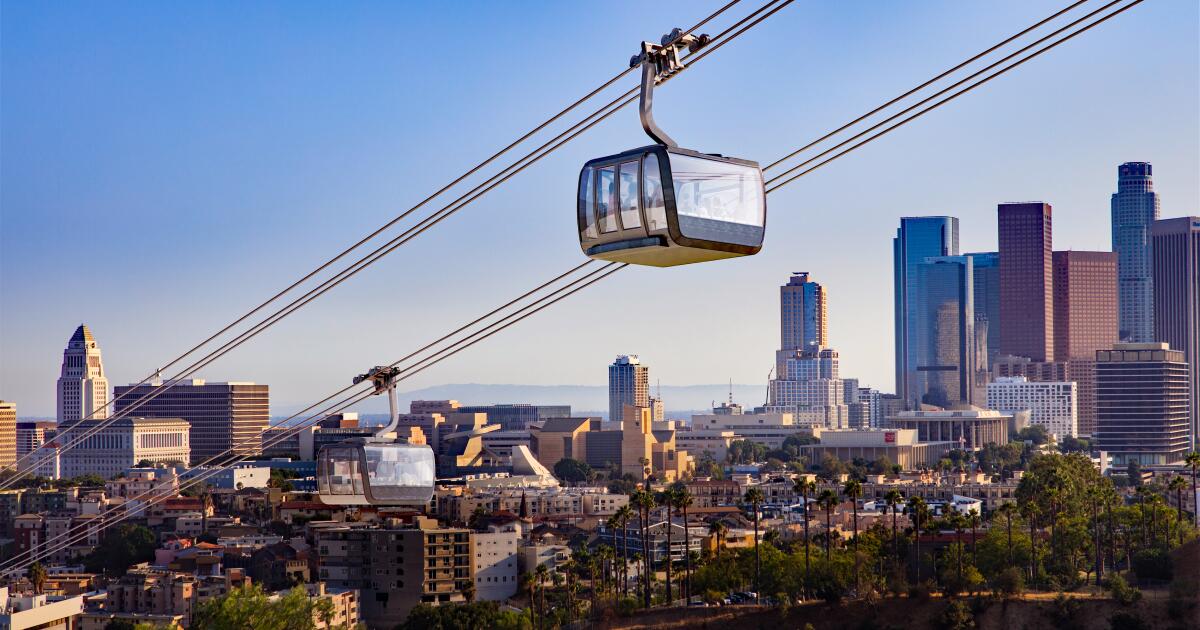Column: Biden was supposed to be a bridge. He became a roadblock
From the outside looking in, Gov. Gavin Newsom unofficially announced he was running for president on Thursday, March 30, 2023, the day he transferred $10 million from his state campaign funds to launch his PAC, Campaign for Democracy, along with a nationwide tour. Newsom unofficially suspended his campaign a month later, on April 25, the day President Biden announced he was seeking reelection.
This timeline is important when it comes to talking about Kamala Harris. Newsom, like Harris, has been in the wings for years as part of the next generation of Democratic national leaders — and, like Harris, he was ready for the spotlight when Biden decided to stick around instead.
The title of Harris’ upcoming book, “107 Days,” is in reference to the amount of time she had to launch a campaign, write policy, secure the nomination and fundraise after Biden bowed out in the summer of 2024. An excerpt from the memoir titled “The Constant Battle” was published this week in the Atlantic. In it, Harris suggests some of the foes she was battling during her time in the White House were Biden loyalists who did not want to see her succeed as vice president.
It’s a rather scathing critique given the stakes of the 2024 election. The excerpt in its entirety is an uncomfortable glimpse into one of the most chaotic moments in American politics. Unsurprisingly there have already been reports of pushback from former Biden aides with one being quoted as saying: “No one wants to hear your pity party.”
Which is why it is important to remember the timeline.
In March 2020, while campaigning in Detroit, a 77-year-old Biden stood next to Harris, Sen. Cory Booker of New Jersey and Michigan Gov. Gretchen Whitmer and told his party that he viewed himself “as a bridge, not as anything else,” adding: “There’s an entire generation of leaders you saw stand behind me. They are the future of this country.” Recognizing his age was a concern for voters back then, the message Biden sent that day suggested he was running for only one term.
And then more than three years later, Biden changed his mind and his message. In doing so, he did not just go back on a campaign promise, he prevented the future of his party — like Newsom, Whitmer, Booker and Harris — from making a case for themselves in a normal primary.
That’s why the book is called “107 Days.” That’s how much time he gave his would-be successor to win the presidency.
Biden was a tremendous public servant whose leadership steered this nation out of a dark time. He also was conspicuously old when he ran for president and considered a short-timer. The first woman to be elected vice president didn’t decide to run for the top job at the last minute. But Biden went back on his word in 2023 and drained all the energy out of his party. It was only after the disastrous debate performance of June 2024 that the whispers inside the Beltway about his ability to win finally became screams.
“Joe was already polling badly on the age issue, with roughly 75 percent of voters saying he was too old to be an effective president,” Harris writes. “Then he started taking on water for his perceived blank check to Benjamin Netanyahu in Gaza.”
That’s not slander against Biden; that’s the timeline. It may not be what some progressives want to read, but that does not mean the message or messenger is wrong.
Legend has it James Carville, key strategist for Bill Clinton’s 1992 presidential run, once went to a white board at the campaign’s headquarters in Arkansas and wrote three key messaging points for staffers. The catchiness and humor of one, “the economy, stupid,” elevated it above the other two: “change vs. more of the same” and “don’t forget health care.” Clinton’s victory would later cement “the economy, stupid” as one of the Democratic Party’s most enduring political quips — which is really too bad.
Because the whole point of Carville going to the white board in the first place wasn’t to come up with a memorable zinger, it was to remind staffers to stay on the course. The Democrats’ 2024 chances were endangered the day Biden changed direction by running for reelection, not when he stepped aside and Harris stood in the gap.
That’s not to suggest her campaign did everything right or Biden staying in for as long as he did was totally wrong. But there’s a lot to learn right now. Democrats are extremely unpopular. Perhaps instead of dismissing the account of the party’s most recent nominee, former Biden aides and other progressives should take in as much information as they possibly can and consider it constructive feedback.
In 2020, Biden had one message. In 2023, it was the opposite. I’m sure there are things to blame Harris for. Losing the 2024 election isn’t one of them.
YouTube: @LZGrandersonShow


